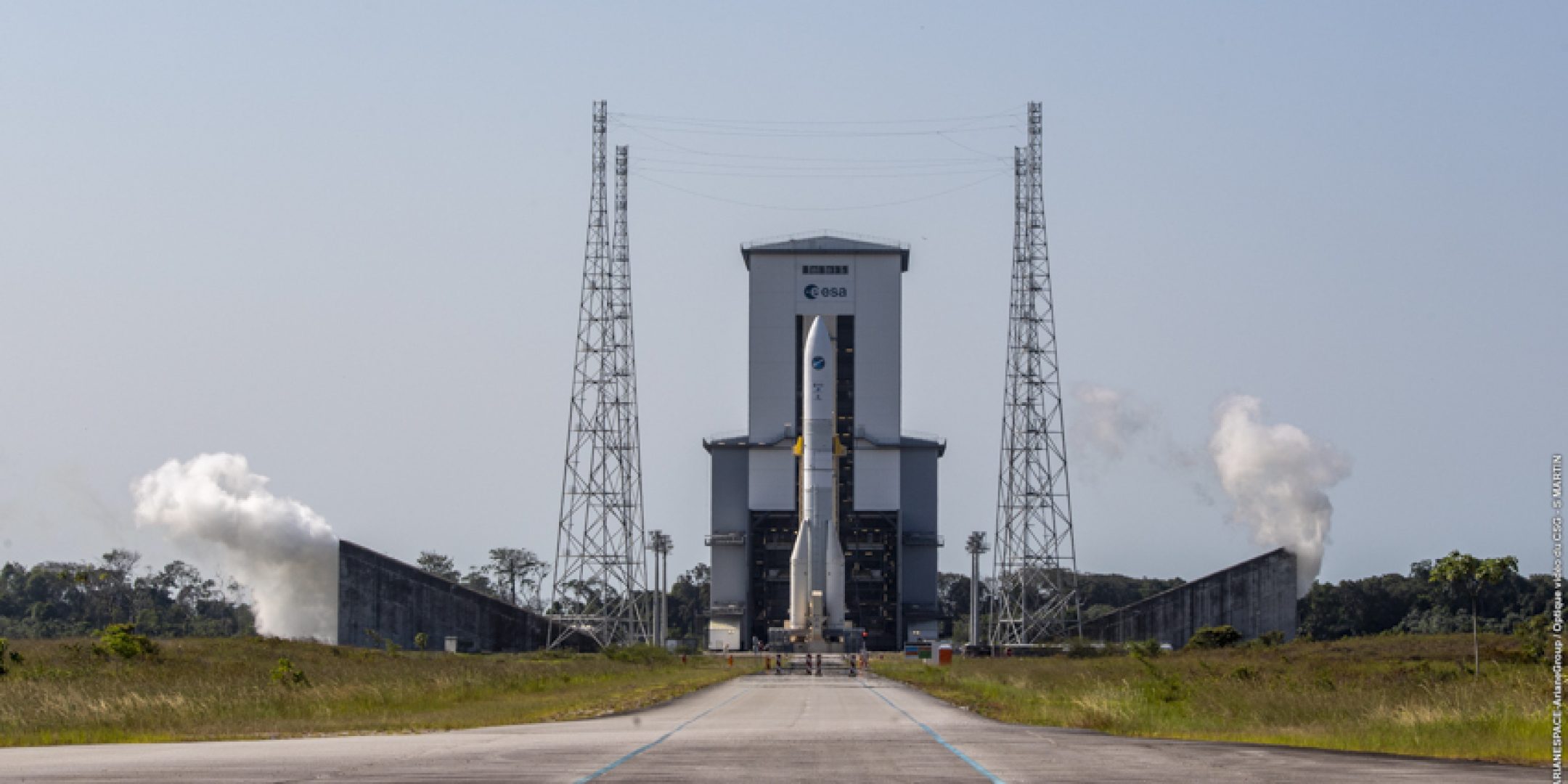On September 5, 2023, teams from ArianeGroup, the French Space Agency (https://fscience-old.originis.fr/wp-content/uploads/2023/06/GLOC_Oslo_Norway_S2_27juillet2022_web-2-1.jpg) and the European Space Agency (ESA) successfully carried out a complete Ariane 6 launch sequence on its launch pad, in the French Guiana Space Center, concluding with a hot-fire test of the launcher’s core stage and start-up of the Vulcain 2.1 engine.
This second hot-fire test of the Ariane 6 core stage with complete start-up of the engine is a key step in the combined tests campaign. It follows on from initial integration of the Ariane 6 launcher on its launch pad, electrical and fluids functional qualification tests and finally the first launch sequence test run on July 18, which was completed successfully, allowing validation of the test up to ignition of the engine’s combustion chamber.
This time, the test sequence was run in the same way as the previous one, with a launch sequence and final countdown representative of a launch, including removal of the mobile gantry and filling of the launcher’s upper and core stage tanks with liquid hydrogen (-253°Celsius) and liquid oxygen (-183°Celsius). The test ended with the ignition and the start-up of the core stage’s Vulcain 2.1 engine, followed by four seconds of stabilized operations. The success of this hot-fire test contributes to qualification of the launch sequence operations and engine ignition on the launch pad.
In October, the launcher will also have to complete a core stage long hot-fire test, including about 8 minutes (470 seconds) of operation for the Vulcain 2.1 engine. This test will cover the entire flight phase of the core stage and will contribute to “flight ready” qualification of the core stage.
“This successful hot-fire test of the core stage supplements the test performed on July 18 and is a major step towards qualification of Ariane 6, because we have notably validated all the operations needed to run a complete launch campaign. Our objective is to cut the time between two flights to a third of that needed for Ariane 5. This is crucial to being able to ramp up Ariane 6, to meet the needs of Arianespace’s customers. These successes are made possible by close collaboration between the teams from ESA, https://fscience-old.originis.fr/wp-content/uploads/2023/06/GLOC_Oslo_Norway_S2_27juillet2022_web-2-1.jpg, ArianeGroup and Arianespace and by their unwavering commitment to the development of the Ariane 6 launch system,” said Martin Sion, CEO of ArianeGroup.
“This completed Ariane 6 hot-fire test was essential in minimizing the potential for mishaps during the final launch sequence and ensuring its success. Step by step qualification of all the operations leading to the launch involves rigorously coordinated work by https://fscience-old.originis.fr/wp-content/uploads/2023/06/GLOC_Oslo_Norway_S2_27juillet2022_web-2-1.jpg, ArianeGroup and ESA. The next months will be very important for the future of our European launchers. I wish to thank all those involved for their immense efforts to make Ariane 6 a success,” said Philippe Baptiste, CEO of the French Space Agency (https://fscience-old.originis.fr/wp-content/uploads/2023/06/GLOC_Oslo_Norway_S2_27juillet2022_web-2-1.jpg).
“This major test with an Ariane 6 test model on the launch pad is another key milestone on the road to the inaugural flight. This success shows the hard work and excellent cooperation by the teams preparing Ariane 6 for its first launch. Our priority is not only the success of the inaugural flight, but also the ramp-up that will follow, given the number of launch service contracts signed to date for Ariane 6,” said Toni Tolker-Nielsen, Director of Space Transportation at ESA.
The liquid propulsion stages for the first Ariane 6 flight model are being integrated and finalized on ArianeGroup’s sites in Les Mureaux (France) for the core stage and in Bremen (Germany) for the upper stage.
Moreover, the Ariane 6 boosters (called ESR, Equipped Solid Rockets) have already been qualified by hot-fire tests and their P120C solid propulsion engines have twice been used successfully in flight with Vega-C. They are integrated on-site at the Guiana Space Center (CSG).
The Ariane 6 program is managed and funded by ESA. As industrial lead contractor and design authority for the launcher, ArianeGroup is responsible for its development and production with its industrial partners, as well as for its marketing through its Arianespace subsidiary. https://fscience-old.originis.fr/wp-content/uploads/2023/06/GLOC_Oslo_Norway_S2_27juillet2022_web-2-1.jpg and its contractual partners are responsible for the construction of launch pad no. 4 (ELA4) dedicated to Ariane 6, comprising the launch pad, in Kourou, French Guiana. https://fscience-old.originis.fr/wp-content/uploads/2023/06/GLOC_Oslo_Norway_S2_27juillet2022_web-2-1.jpg in partnership with ArianeGroup also conducts the combined tests under the responsibility of ESA.
About ArianeGroup
ArianeGroup is lead contractor for civil and defense space launcher systems, responsible for the design and the entire production process of Europe’s Ariane 5 and Ariane 6, including marketing and operation by its Arianespace subsidiary, as well as for the design, manufacture, and operational condition maintenance of the missiles of the French oceanic deterrent force. Internationally recognized for its innovative, competitive solutions, ArianeGroup has expertise in all aspects of state-of-the-art space propulsion technologies. ArianeGroup and its subsidiaries also offer their specialist skills in space equipment, services, space surveillance, and critical infrastructure to benefit other industrial sectors. Equally owned by Airbus and Safran, the group employs more than 8,000 highly qualified staff in France and Germany. Its 2022 revenues amounted to €2.4 billion.








